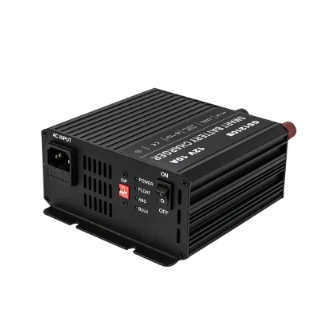Understanding the Role of a Rectifier in AC to DC Battery Chargers
2024-08-20
In the world of electronics, power conversion is a fundamental process. When it comes to charging batteries, converting alternating current (AC) to direct current (DC) is crucial. This conversion is made possible by a key component called a rectifier. In this blog, we'll explore the role of a rectifier in an AC to DC battery charger and why it's essential for efficient battery charging.
What is a Rectifier?
A rectifier is an electrical device that converts AC, which alternates in direction, to DC, which flows in a single direction. This conversion is necessary because batteries store energy in DC form. The AC supplied by power outlets cannot be used directly to charge batteries, making rectifiers a critical component in battery chargers.
How Does a Rectifier Work in a Battery Charger?
When you plug in your battery charger, AC power from the outlet flows into the charger. The rectifier then takes this AC power and converts it into DC power. Here's a simplified breakdown of the process:
1. AC Input: The charger receives AC power from the outlet, which typically oscillates at a frequency of 50 or 60 Hz, depending on your region.
2. Rectification Process: The rectifier uses diodes—components that allow current to flow in only one direction—to convert the AC power into DC power. There are different types of rectifiers, including half-wave, full-wave, and bridge rectifiers, each with varying levels of efficiency.
3. DC Output: After the AC power is converted, the rectifier outputs DC power, which is then used to charge the battery. The rectifier ensures that the power supplied to the battery is stable and consistent, which is essential for safe and efficient charging.
Types of Rectifiers in Battery Chargers
1. Half-Wave Rectifier: This type of rectifier uses a single diode to convert AC to DC. It only allows one half of the AC waveform to pass through, resulting in a pulsating DC output. While simple and cost-effective, half-wave rectifiers are less efficient and are typically used in low-power applications.
2. Full-Wave Rectifier: Full-wave rectifiers use two or four diodes to convert both halves of the AC waveform into DC. This results in a smoother and more efficient DC output, making it a better choice for battery chargers that require more stable power.
3. Bridge Rectifier: The bridge rectifier is a type of full-wave rectifier that uses four diodes arranged in a bridge configuration. This setup allows for even more efficient conversion of AC to DC and is commonly used in modern battery chargers.
Conclusion
The rectifier is a vital component in any AC to DC battery charger, ensuring that the AC power from the outlet is safely and efficiently converted into the DC power needed to charge batteries. Understanding the role of a rectifier can help you appreciate the technology behind your everyday electronics and make informed decisions when choosing battery chargers for different applications.



